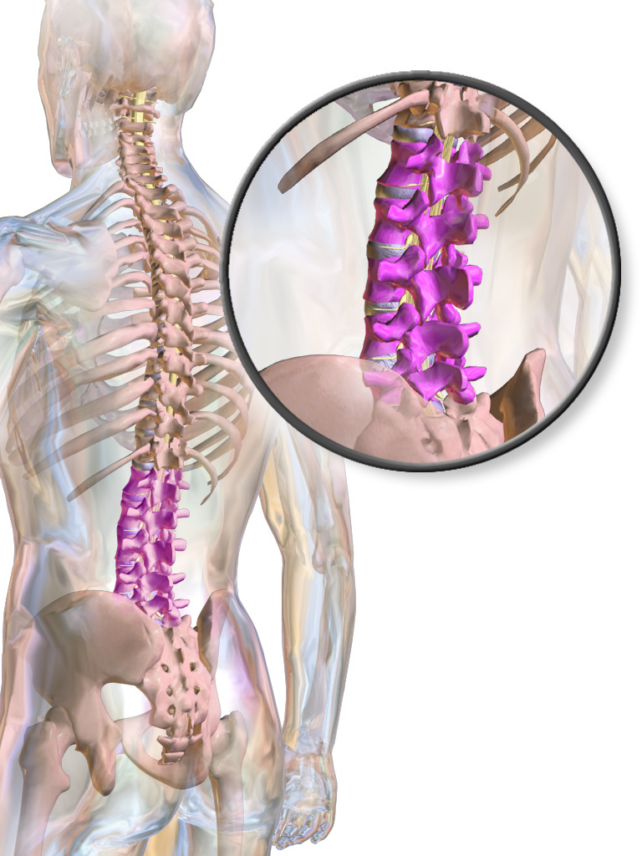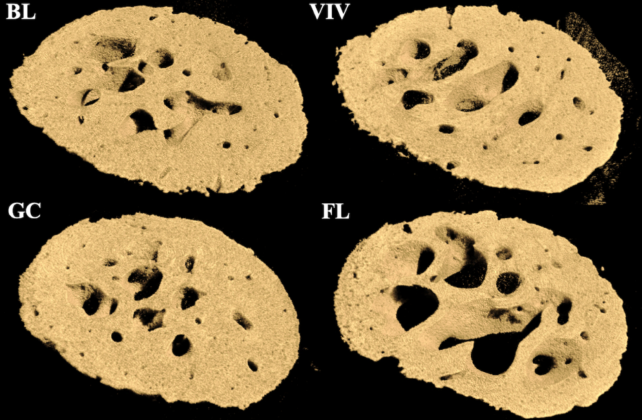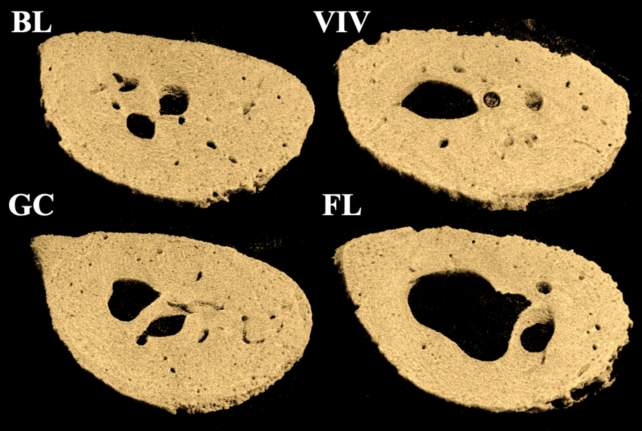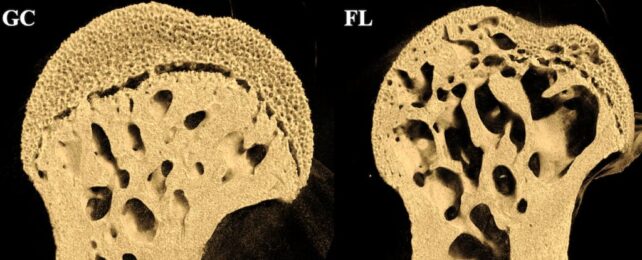Floating about in microgravity might seem like a blissful reprieve for the human body's weight-bearing skeleton, but when astronauts spend months in space, their bone density takes a serious hit that they may never fully recover from.
A study of mice on board the International Space Station gives NASA scientists a better clue as to why this significant and unresolved health risk exists.
As it turns out, the bone losses may not have to do with space radiation, a lack of sunlight, or a similar, systemic factor. After mice spent 37 days in orbit, some parts of their skeletons showed more damage than others.
Compared to 'ground control' mice who were not shuttled off our planet, the hindlimb femurs of mice in space were riddled with large holes, especially at their ends where they join the hip and knee joint. By contrast, the lumbar part of mice spines remained remarkably intact.
"A specific focus of our study is the femur because of its major weight-bearing role in the mouse," explain researchers from NASA and the Blue Marble Space Institute of Science.

In two-legged humans, the lumbar spine mostly carries the weight of the upper body, but in four-legged rodents, the horizontal structure does not serve the same weight-bearing role.
This suggests that mammal bones bearing weight on Earth are the ones most impacted by microgravity in orbit.
Perhaps it's like the 'use it or lose it' concept in neuroscience. If weight-bearing bones aren't getting 'worked out' like usual, they may begin to deteriorate.

When mice on Earth were kept in cages that limit movement, they showed losses of density in weight-bearing bones but to a smaller extent than microgravity mice.
To account for the stress of the rocket launch, the ground control mice were also exposed to simulations of flight.
"If space radiation in low Earth orbit or other systemic factors were the primary effectors of bone loss during spaceflight, we would expect systemic changes to the skeletal system," explain the researchers.

If the loss was caused by ionizing radiation, for instance, researchers would expect to see the dense outer bits of bone somewhat shielding the inner marrow cavity. But that doesn't appear to be the case. The deterioration occurs inside out in mice.
The femoral neck, for instance, has a substantial outer covering of bone, and yet it shows a significant loss of inner, spongy bone marrow when exposed to microgravity for 37 days.

After this much time in low Earth orbit, the authors of the study, led by bioengineer Rukmani Cahill, say mice on board the ISS were exposed to only a small daily dose of radiation.
In simulated studies showing radiation can trigger bone loss, the dosage is much, much higher, equivalent to about 13 years of living on board the ISS.
In less than half a year in low orbit, however, astronauts can experience decades' worth of bone loss, that they may never fully recover. Each month, on average, human space travelers lose 1 percent or more of their bone density, about 10 times the rate of osteoporosis on Earth. This decline greatly increases the risk of fractures in long bones like the femur.
Unlike human astronauts, the mice tested in the current study were young and in the late stages of skeletal maturation. In microgravity, their femurs, which should have kept growing for a while, showed signs of premature ossification, turning cartilage to bone earlier than typical. This could possibly limit bone growth, stunting development.

These cautionary results come from NASA's longest-duration spaceflight rodent study to date.
The space agency says it is the first of many experiments that will explore how to protect the health of astronauts during space travel.
If their hypothesis on bone density is right, it suggests that tactics like diet may not improve an astronaut's bone health. Treadmills with harnesses that hold a user to the ground or devices that mimic weight lifting in space could prove more effective.
The study was published in PLOS ONE.
